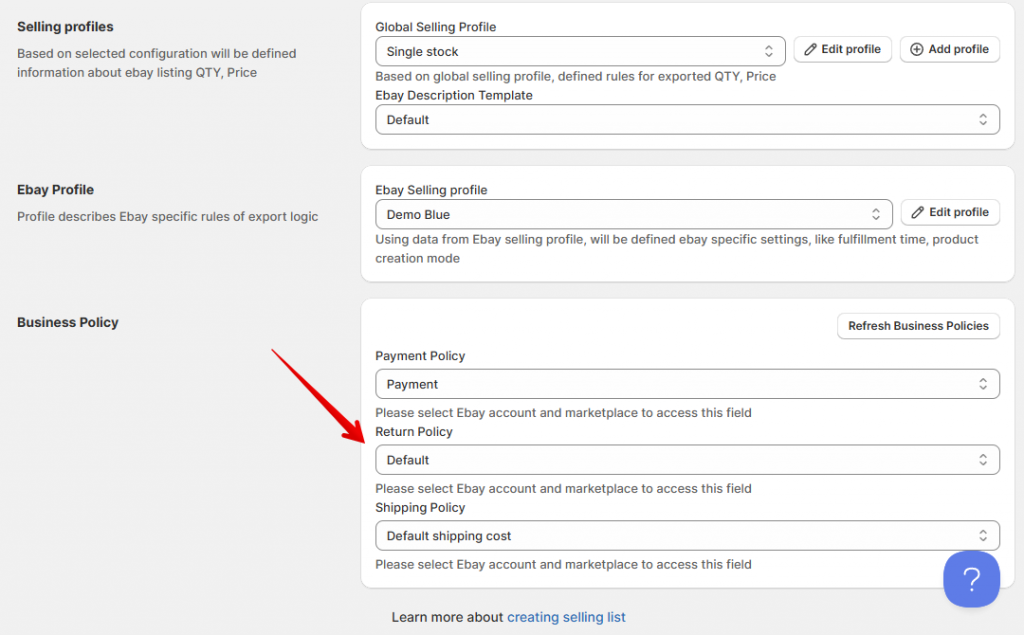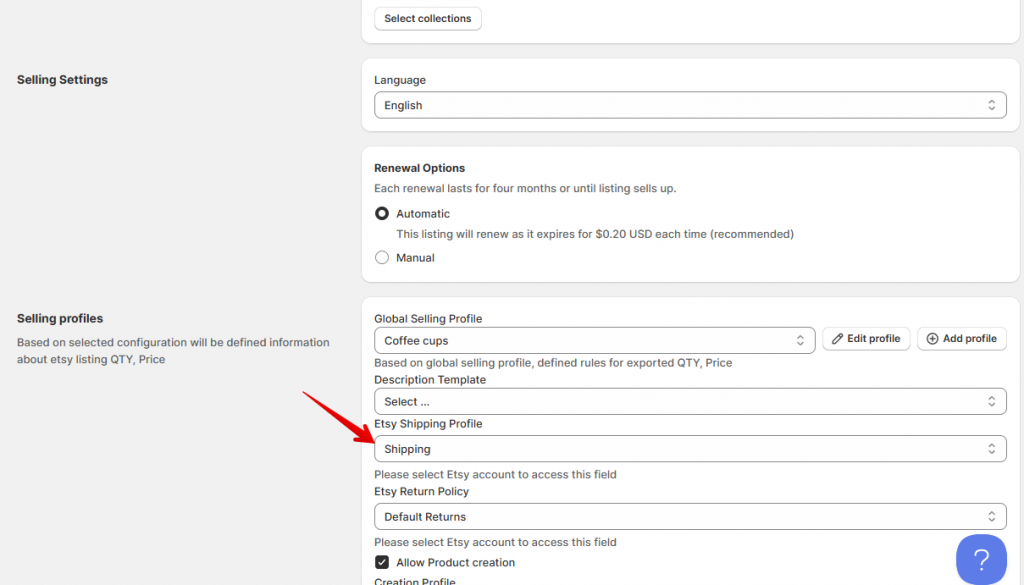12 Sep'25

Die Bearbeitung von Retouren von Amazon, eBay und Etsy wird wesentlich effizienter, wenn alles an einem Ort verbunden ist. Der Retourenprozess kann organisiert bleiben, wenn Marktplätze mit einem E-Commerce-Shop synchronisiert sind. In diesem Artikel werden wir uns ansehen, wie Salestio mit retournierten oder stornierten Bestellungen umgeht.
Jeder Marktplatz hat spezifische Einstellungen, sodass Sie definieren können, wie Ihr Shop mit Retouren umgeht.
Für Amazon gehen Sie zu Ihrem Seller Central-Konto > Einstellungen > Rücksendeeinstellungen. Hier können Sie spezifische Angaben wie Zeitrahmen für Ihre Rücksendungen sowie andere Bedingungen für die Rücksende-Berechtigung anpassen. Amazon ermöglicht es Ihnen, die automatisierte Rücksendebearbeitung für Fälle zu aktivieren, die Ihren vordefinierten Kriterien entsprechen. Die Nutzung dieser Funktion kann Ihnen helfen, etwas Zeit zu sparen.
eBay-Verkäufer können benutzerdefinierte Vorlagen für ihre Versand-, Zahlungs- und Rücknahmebedingungen erstellen. eBay nennt diese Geschäftsbedingungen und ermöglicht es Ihnen, mehrere solcher Profile zu erstellen, die Sie für verschiedene Produkte kombinieren können. Richten Sie dies in Ihren eBay-Kontoeinstellungen > Verkaufen > Geschäftsbedingungen ein. In den Rücknahmebedingungen können Sie angeben, ob Sie Rücksendungen akzeptieren, gültige Zeitrahmen und zugehörige Versandeinstellungen.
Vollständiger Artikel: Verwendung von eBay-Geschäftsbedingungen mit Salestio
Um Rücknahmebedingungen auf Etsy einzurichten, gehen Sie zu Shop-Manager > Einstellungen > Richtlinieneinstellungen > Rückgaben und Umtausch. Etsy ermöglicht die Konfiguration mehrerer Rücknahmebedingungen, die Sie als Profile für neue oder bestehende Angebote anwenden können.
Salestio-bezogene Einstellungen
Salestio bietet zahlreiche Tools zur Unterstützung von Retouren für Ihre Marktplatzbestellungen. Nachdem eine Bestellung in den Shop importiert wurde, können Sie diese direkt erstatten. Salestio überträgt die Statusaktualisierung zurück an den Marktplatz. Je nach Zielmarktplatz sind die verfügbaren Optionen leicht unterschiedlich.
eBay
Beim Erstellen oder Aktualisieren von eBay-Angeboten sollten Geschäftsbedingungen in Salestio ausgewählt werden (einschließlich Rücknahmebedingungen). Nachdem Sie die Geschäftsbedingungen direkt über das eBay-Konto eingerichtet haben, bearbeiten Sie die Einstellungen der Verkaufsliste in Salestio (Abschnitt Geschäftsbedingungen):

Wenn Sie das nächste Mal ein Produkt an eBay senden oder eine “Vollständige Überarbeitung“-Aktion ausführen, verwendet die App die hier ausgewählten neuen Geschäftsbedingungen.
Eine alternative Möglichkeit, die Richtlinien anzugeben, ist über das Menü “Angebotsdaten erstellen”. Wählen Sie einen Artikel in der Verkaufsliste aus und klicken Sie auf “Angebotsdaten erstellen”. Das Hinzufügen von Informationen hier überschreibt die Einstellungen, die zum Erstellungsprofil hinzugefügt wurden. Zusammen mit anderen Details können Sie hier die Geschäftsbedingungen auswählen. Auf diese Weise können Sie jedem Produkt einen bestimmten Satz von Geschäftsbedingungen hinzufügen.

Vollständige Anleitung zum Veröffentlichen auf eBay:
Exportieren von Shopify-Produkten auf den eBay-Marktplatz mit Salestio
Etsy
Für Etsy werden die Einstellungen für Retouren in den Einstellungen der Verkaufsliste konfiguriert. Ändern Sie die Einstellung “Etsy-Rücknahmebedingungen” in eines der Profile, die Ihrem Etsy-Konto hinzugefügt wurden, und speichern Sie die aktualisierte Verkaufsliste.
Rücknahmebedingungen werden angewendet, wenn neue Artikel veröffentlicht oder eine Aktualisierungsaktion aus der Verkaufsliste für bestehende Angebote ausgeführt wird.

Mit dem richtigen Setup kann die Verwaltung von Retouren von Amazon, eBay und Etsy einfach und effizient gestaltet werden. Salestio rationalisiert die Arbeit mit mehreren Marktplatz-Storefronts durch umfassende Synchronisierungsfunktionen. Wählen Sie Ihre E-Commerce-Plattform aus, um eine kostenlose 30-Tage-Testversion zu erhalten.





